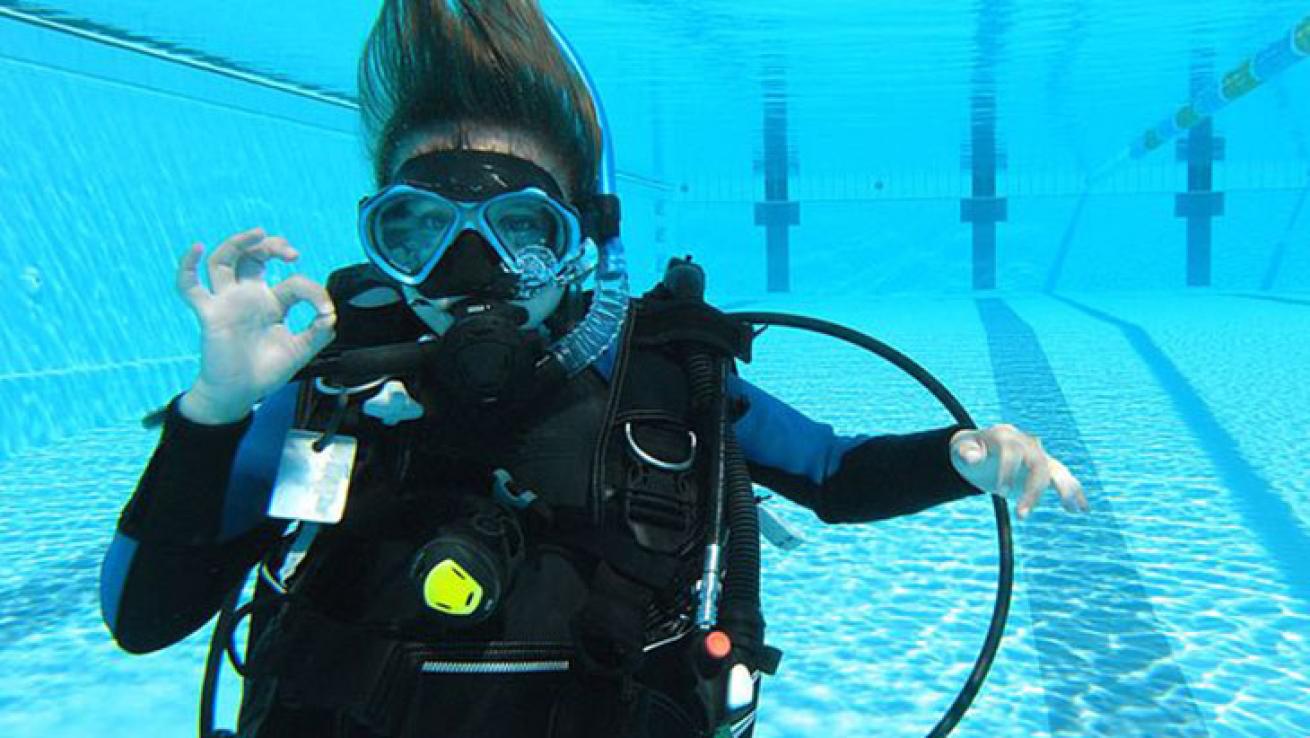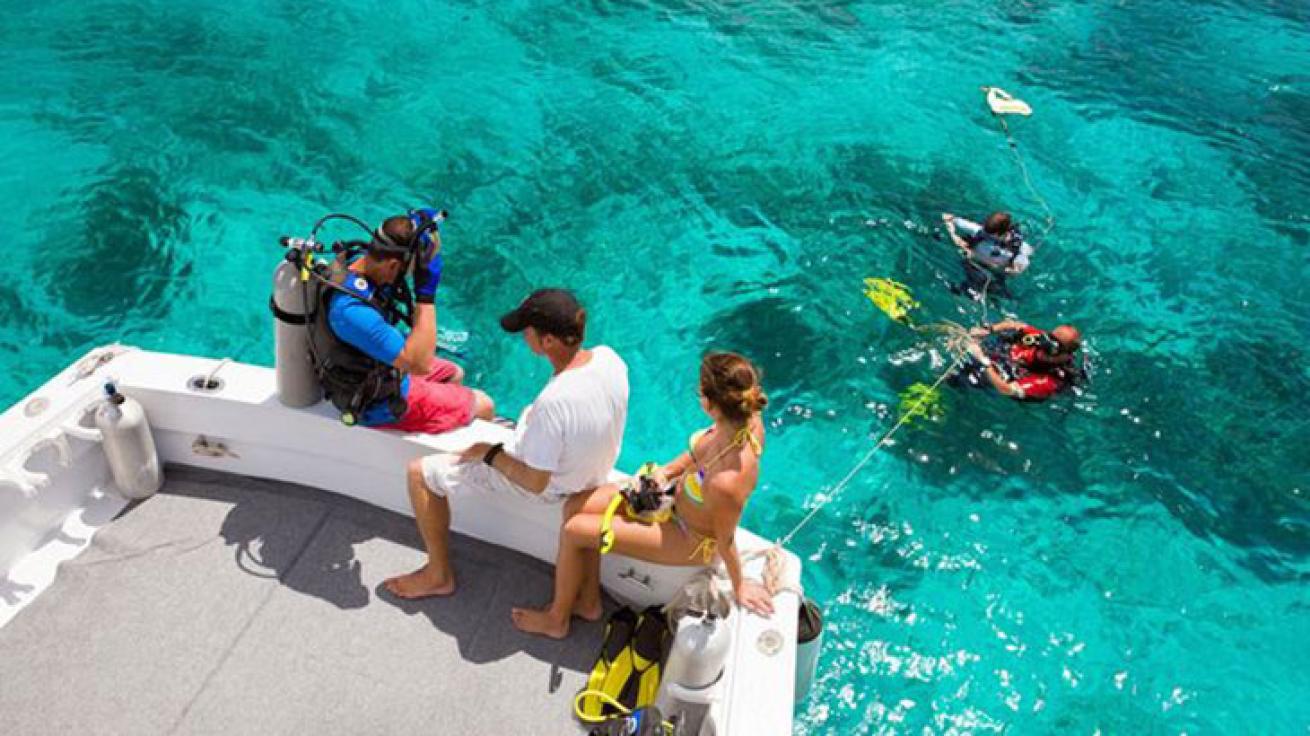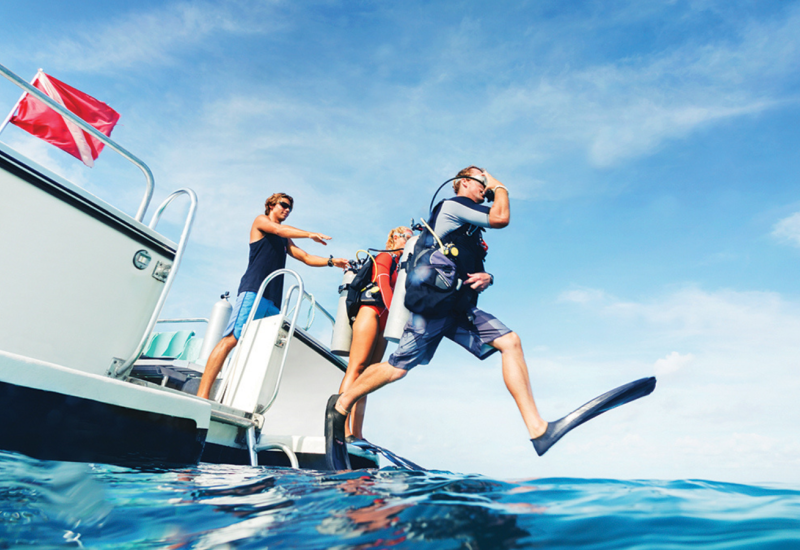What to Expect When You Are Learning to Dive

ShutterstockELearning can make earning a scuba diving certification much more convenient. Read on below to find out what learning style is better for you.
Traditional Book vs E-learning
It’s never been easier to get certified to learn to dive, but first be aware of your learning style
The book work and written exams for your scuba diving certification can be taken in a classroom or online. The first step you’ll make when signing up to learn to dive is to choose between traditional classroom sessions or e-learning.
Choose the traditional classroom option if:
- You prefer a scheduled time period for your course
- You like to learn slowly
- You learn better through in-person lectures
- You like instant feedback or responses to your questions
- You like learning with others
Choose the e-learning option if:
- You have a busy schedule and need flexibility
- You’re a quick learner
- You prefer studying independently
- You don’t mind getting emailed responses to your questions
- You prefer studying independently

iStockELearning can make earning a scuba diving certification much more convenient.
The open-water course consists of three main phases: knowledge development (online, independent study or in a classroom) to understand the basic concepts of scuba diving, confined-water dives (usually in a pool) to learn basic scuba skills, and open-water “checkout” dives to demonstrate mastery of your skills.
Here’s what to expect during the classroom or eLearning phase:
Whether you prefer a traditional learning setting, independent study or eLearning, you will be asked to read the course material. If you go to a classroom, there are usually three to four classroom sessions where the instructor will lead you through the chapters of a textbook. With independent study and eLearning you can work at your own pace, on your own schedule. ELearning provides the information through a narrator, with text on slides and videos.
You will learn the parts and functions of the different pieces of dive gear, and how to choose gear that is best for you.
You will learn diving theory and how to dive safely in different diving situations.
After each section of the material, your instructor will review what you have studied and you will take a short quiz to demonstrate you understand the concepts and information presented.
At the end of the course, you’ll take a final exam to make sure you remember all the important concepts and information. Your instructor will work one-on-one with students who need extra help and time to master the academic portion.
All the sessions are designed to prepare you for the confined-water sessions. If you’re learning in a traditional classroom, your confined-water sessions will be mixed in with classroom sessions. With eLearning, you will most likely complete the entire knowledge phase before starting your confined-water session.
That’s it! We promise you, this is a whole lot easier than your high-school chemistry class. And it gets you ready for exciting adventures ahead!

iStockPerfect your scuba skills during the confined-water portion of your certification course.
The open-water course consists of three main phases: knowledge development (online, independent study or in a classroom) to understand the basic concepts of scuba diving, confined water dives (usually in a pool) to learn basic scuba skills, and open-water dives to demonstrate mastery of your skills.
Whether you prefer a traditional learning setting, independent study or eLearning, you will be asked to practice and master basic scuba-diving skills in confined water. This is usually a pool, but can be a bay, lake, or even a man-made quarry dive site — in other words, a body of water that has calm conditions, good visibility and no current, and with easy entry and exit points. It’s a great place to develop your confidence as a diver! There are usually about five confined-water sessions.
Here’s what to expect during the confined-water phase:
You’ll learn how to set up your scuba gear. You’ll do this each time you have a confined-water session so that by the end of the course, you’ll be completely comfortable in setting up your gear.
You’ll play some games, which helps develop your skills and boost your confidence.
You’ll practice skills like clearing a flooded mask and removing your BC in the water. Want to see them in action? Here’s a look at some of the skills you will learn.
You’ll practice emergency skills, like recovering a regulator and replacing your scuba mask.
You’ll begin to perfect dive skills like neutral buoyancy and communicating with a dive buddy.
Each confined-water experience builds on the skills you learned in the previous session. After you’ve had fun in the pool (and it is fun!), you’re ready for your open-water checkout dives — and exciting adventures ahead!

iStockA scuba diving certification course will have you comfortable underwater and in scuba gear.
The open-water scuba diving course consists of three main phases: knowledge development (online, independent study or in a classroom) to understand the basic concepts of scuba diving, confined-water dives (usually in a pool) to learn basic scuba skills, and open-water “checkout” dives to demonstrate mastery of your skills.
Whether you prefer a traditional learning setting, independent study or eLearning, you will make open-water checkout dives to demonstrate you’ve mastered the skills to be certified as an open water diver. You may make these dives near your home or while on vacation. There are usually four checkout dives completed over at least two days.
Here’s what to expect during the open water checkout phase:
The order of how you demonstrate skills will vary from instructor to instructor, but generally, you’ll perform the easiest ones first, including showing you can ascend and descend easily.
On each dive, you will be asked to demonstrate a few of the techniques you learned in the pool, then you will log those dives in your dive log book and your instructor will sign it.
While you are still a new diver, this is a good time to focus on more difficult skills like buoyancy. Generally, this takes dozens of dives to develop, but it’s good to begin noticing your instructor’s swimming attitude and to try and emulate it.
After your last dive, you will be officially certified to dive! Your instructor will complete your paperwork to send to the certifying agency so you can get your dive card, referred to as a C-card.
We can tell you from experience that this is one of the most rewarding experiences you can have in life!










